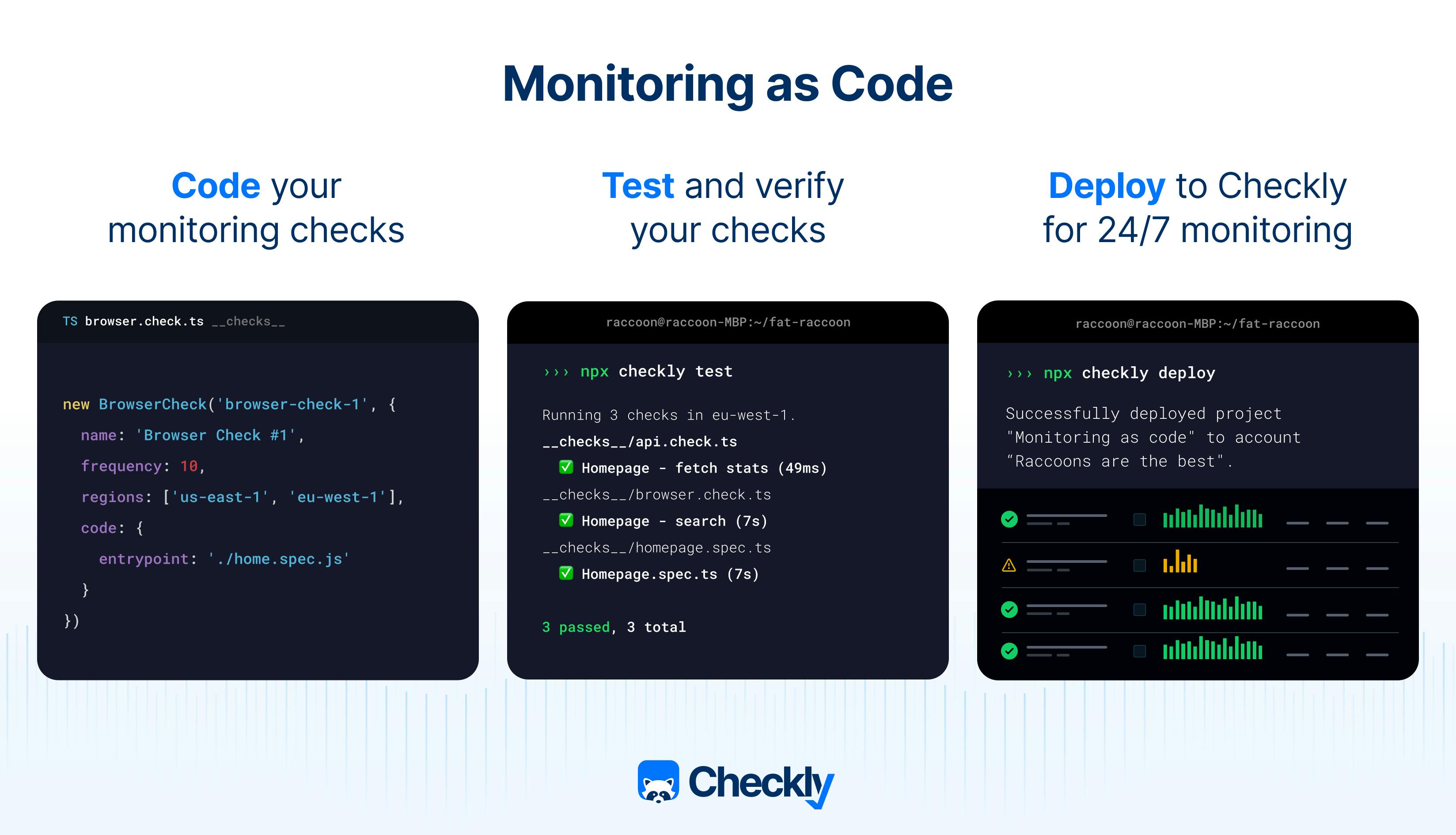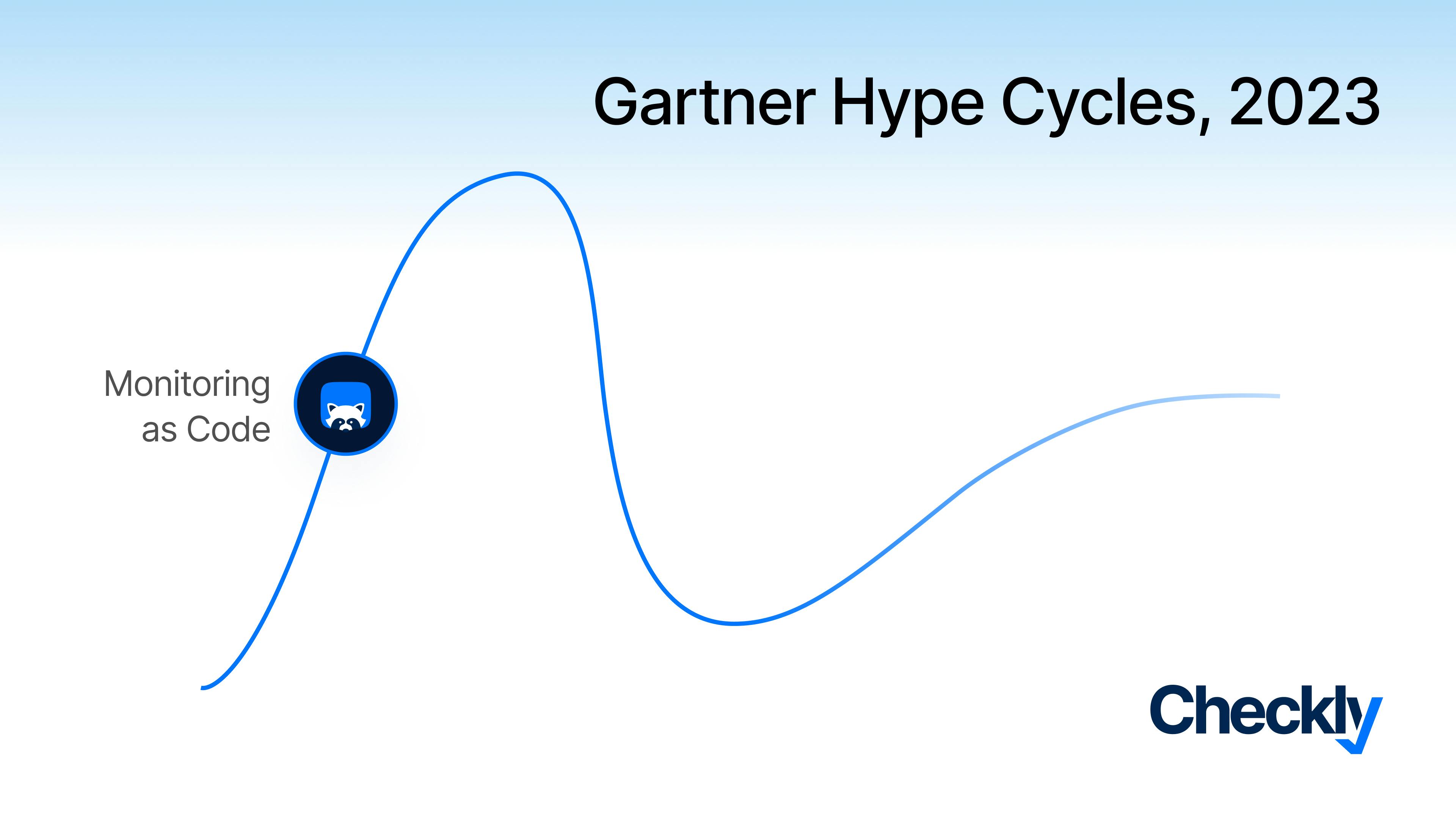I’m thrilled to announce that Gartner added Monitoring as Code (MaC) as an emerging practice into their Hype Cycles for Monitoring and Observability and Site Reliability Engineering. We are extremely hyped about this recognition and being listed as a vendor innovating in that space.
Since we founded Checkly, our vision has been that monitoring should be set up as code and live in your repository; it must be open-source based and feel natural for developers. Ultimately, this meant that we were envisioning uniting testing and monitoring testing your app's user experience on staging and production continuously.
And today, seeing hundreds of companies adopting that flow to deliver quality apps faster is fantastic.
The Gartner Hype Cycle provides a graphic representation of the maturity and adoption of technologies and applications. It explains how these are relevant to solving real business problems while also exploiting new opportunities. The Hype Cycles for Monitoring and Observability and Site Reliability Engineering illustrate the most relevant innovations for technology leaders to adopt in the monitoring and observability space. Gartner rated MaC as providing a high level of benefits.
Here is how Gartner describes the business impact of MaC:
"By leveraging MaC, teams can collaborate, share, optimize and speed up monitoring configurations to ensure a consistent, efficient approach to monitoring that can support high-velocity changes, while reducing the risk of missed alerts. MaC enables DevOps teams to automate monitoring configuration by leveraging the continuous integration/continuous delivery (CI/CD) toolchains or DevOps platforms they use to deliver features or infrastructure."
We keep innovating Monitoring as Code
Earlier this year, we launched our enhanced MaC flow, enabled by our brand-new Command Line Interface (CLI). Today, hundreds of users code, test, and deploy their testing and synthetic monitoring setups with the Checkly CLI and the MaC workflow.
I'm massively excited about the customer feedback we've received.
Here's what Tobias from commercetools had to say about our CLI:

Understanding Monitoring as Code
Like Infrastructure as Code, Monitoring as Code allows you to describe the desired monitoring as code. It applies software principles to monitoring processes and enables monitoring setups to be managed like software code.
With MaC, monitoring is not only codified but also version-controlled, tested, and ultimately automated. This approach allows DevOps teams to shift left and address the limitations of manual and inflexible monitoring setups. Monitoring as Code reduces the risk of misconfigurations and inconsistencies that may lead to longer mean time to detect (MTTD) failures.
You can use our Terraform provider, Pulumi provider, or our CLI to manage your API and browser checks for synthetic monitoring. To provision new checks, define them in HCL, Typescript, or JavaScript, commit them, and deploy them with your application code.
Your monitoring infrastructure is now part of your code base!
Benefits of Monitoring as Code
The new MaC workflow enables developers and engineers to ship faster with more confidence.
A united testing and monitoring workflow
DevOps teams and engineers face the problem of managing numerous tools for testing and monitoring. Monitoring as Code unites testing and monitoring in a single CLI tool. Code and define your monitors, test your preview and staging deployments, and transform your checks into 24/7 monitoring for quick problem detection.

Supporting Continuous Delivery
Traditional UI-driven monitoring often struggles to keep pace with frequent deployments and high-velocity changes. MaC enables DevOps teams to automate monitoring configuration using their existing continuous integration/continuous delivery (CI/CD) toolchains or DevOps platforms. This streamlines the monitoring process and supports the rapid delivery of features and infrastructure while reducing the risk of missed alerts.
Improved Efficiency and Collaboration
By codifying and version-controlling monitoring configurations, teams can collaborate effectively and share optimized monitoring setups. MaC facilitates the management of monitoring configurations at scale, ensuring a consistent and efficient approach across complex systems. It empowers teams to leverage modern methodologies such as Agile, DevOps, and GitOps, enabling automation and efficiency in monitoring configuration.
Conclusion
Monitoring as code is here to stay because it significantly benefits modern DevOps teams and engineers. By adopting a code-driven approach, organizations can achieve automation, consistency, and efficiency in their monitoring configurations and leverage continuous delivery to ship more reliable software.
Getting started with MaC is easy because our CLI is an npm package with a setup guide and numerous ready-to-use API and browser check examples.
Bootstrap a new Checkly project with a single command.
$ npm create checklyNow, log in to your Checkly account or sign up for a new account right from the terminal.
$ npx checkly loginAfter this, dry-run the Checks in your new project on the global Checkly infrastructure.
$ npx checkly test
Running 3 checks in eu-central-1.
__checks__/production.check.js
✔ Add to Cart (3.4s)
✔ Account Login (2.7s)
✔ Checkout (6.1s)
3 passed, 3 totalAnd if all your checks pass, transform your tests into monitors.
$ npx checkly deploy
Successfully deployed project "Monitoring as Code"
to account "Raccoons are the best".Your checks are now deployed as Checkly monitors alerting you when things start to fail.
We are continuously working on our MaC platform and will release a check to code export soon to ease the Monitoring as Code adoption for existing customers. We remain dedicated to pushing the envelope, providing features necessary for shipping quality software faster.
If you’re curious, have a look at our roadmap to see what's coming next.
Press Release: Checkly Was Recognized In Two 2023 Gartner® Hype Cycle™ Reports For Monitoring as Code.

